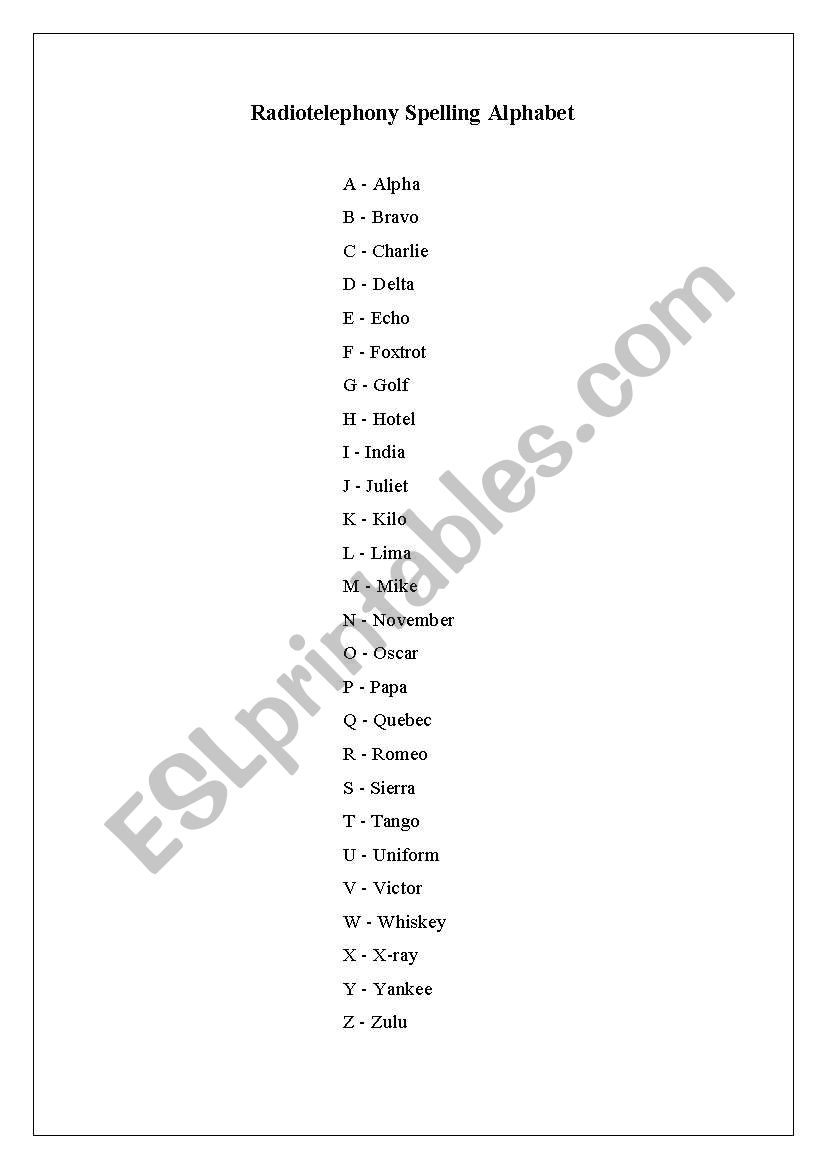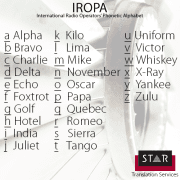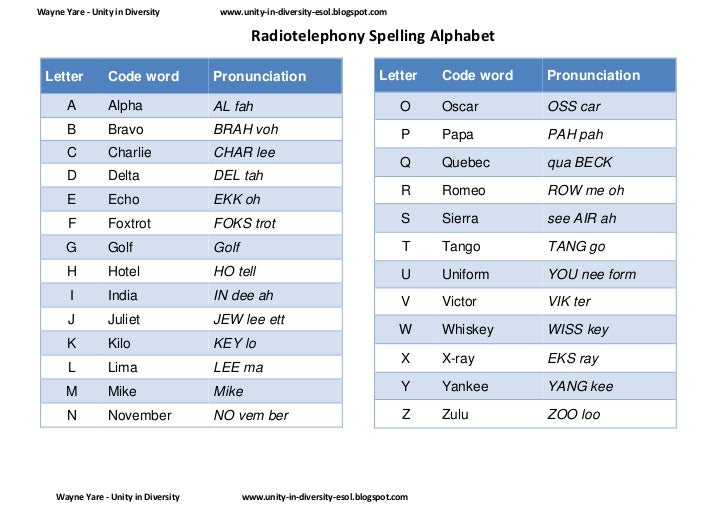

The spelling alphabet is now also defined in other unclassified international military documents. Nevertheless, a NATO unclassified version of the document is provided to foreign, even hostile, militaries, even though they are not allowed to make it available publicly. However, ATP-1 is marked NATO Confidential (or the lower NATO Restricted) so it is not available publicly. The name NATO phonetic alphabet became widespread because the signals used to facilitate the naval communications and tactics of NATO have become global.
#The radiotelephony spelling alphabet code
Because the latter allows messages to be spelled via flags or Morse code, it naturally named the code words used to spell out messages by voice its "phonetic alphabet". Army was operating on its own, it would use its own spelling alphabet, in which some of the letters were identical to the other spelling alphabets and some completely different.Īn alternative name for the ICAO spelling alphabet, "NATO phonetic alphabet", exists because it appears in Allied Tactical Publication ATP-1, Volume II: Allied Maritime Signal and Maneuvering Book used by all allied navies of NATO, which adopted a modified form of the International Code of Signals.


Navy were communicating in joint operations if the U.S. military branch was communicating with any British military branch when operating without any British forces, the Joint Army/Navy spelling alphabet was mandated for use whenever the U.S. Thus, the Combined Communications Board (CCB), created in 1941, derived a spelling alphabet that was mandated for use when any U.S. intra-within a service (but not between services) of one nation.joint-between (but not necessarily within) two or more services of one nation.combined-between services of one nation and those of another nation, but not necessarily within or between the services of the individual nations.A summary of the terms used was published in a post-WWII NATO memo: This table combines the ICAO international spelling alphabet and the ITU International Morse Code.ĭuring WWII, the Allies had defined terminology to describe the scope of communications procedures among different services and nations. NATO Phonetic And Morse Code Alphabet, from the U.S. The last WWII spelling alphabet continued to be used through the Korean War, being replaced in 1956 as a result of both countries adopting the ICAO/ ITU Radiotelephony Spelling Alphabet, with the NATO members calling their usage the " NATO Phonetic Alphabet". For communication between the different countries and different services specific alphabets were mandated. The Allied militaries - primarily the US and the UK had their own radiotelephone spelling alphabets which had origins back to World War I and had evolved separately in the different services in the two countries. they are not a system for transcribing speech sounds. They are not a "phonetic alphabet" in the sense in which that term is used in phonetics, i.e. The Allied military phonetic spelling alphabets prescribed the words that are used to represent each letter of the alphabet, when spelling other words out loud, letter-by-letter, and how the spelling words should be pronounced for use by the Allies of World War II. For the visual representation of speech sounds, see phonetic notation. This article is about the spelling alphabets used in military radio communication.


 0 kommentar(er)
0 kommentar(er)
